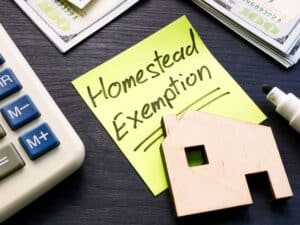Property taxes represent a major expense for homeowners, business owners, and real estate investors, calculated based on the assessed value set by your county appraisal district. If this value is higher than your property’s fair market value—the price it would fetch in a competitive market—you could be overpaying significantly each year. Filing a property tax protest allows you to challenge an inflated assessment, but timing is critical. Missing the filing deadline can lock in an unfair valuation, costing you hundreds or thousands annually. This comprehensive guide underscores the importance of timely protest filing, offering practical steps and expert insights to help you act promptly, build a strong case, and maximize tax savings.
Why Timely Filing Matters
Submitting your property tax protest on time is the gateway to correcting an overvaluation, securing exemptions, or addressing errors. A successful protest can substantially lower your tax bill—for instance, reducing a $500,000 assessment by $50,000 at a 2.5% tax rate saves $1,250 yearly. However, appraisal districts enforce strict deadlines, typically May 15 or 30–45 days from the date of your appraisal notice. Filing early and on time offers strategic advantages, while missing the deadline eliminates your ability to appeal until the next year. This guide reveals why prompt action is essential and how to navigate the process effectively.
Key Reasons to File Your Protest Promptly
These insights highlight why timely filing is a cornerstone of a successful property tax protest:
1. Meet Strict Deadlines to Preserve Your Rights
- Why It Matters: Appraisal districts set firm protest deadlines (often May 15 or 30–45 days from the notice). Missing this cutoff means accepting the assessed value, even if it’s inflated, until the next tax year.
- How to Act:
- Check your appraisal notice for the exact deadline, typically noted prominently.
- Mark the date on your calendar and set a reminder at least one week prior.
- File online, by mail, or in person using the district’s protest form, available on their website or by request.
- Example: If your notice arrives April 10 with a May 15 deadline, filing by May 1 ensures compliance and avoids last-minute issues.
- Insight: Deadlines are non-negotiable, with rare exceptions (e.g., documented emergencies in some states). Filing early protects your appeal rights.
2. Gain More Time to Build a Strong Case
- Why It Matters: Filing early gives you weeks to gather compelling evidence, such as comparable sales (comps), property condition documentation, or appraisal errors, increasing your chances of success.
- How to Act:
- File as soon as you review your notice and suspect an overvaluation (e.g., within a week of receipt).
- Use the extra time to collect 3–5 comps, photos of property issues, or contractor repair estimates.
- Refine your evidence based on district feedback or realtor input.
- Example: Filing by April 25 for a May 15 deadline allows three weeks to source MLS comps showing a $410,000 value vs. your $450,000 assessment.
- Insight: Early filers can access better resources (e.g., realtor availability) and avoid rushing, which often leads to weak evidence.
3. Secure an Earlier Hearing Slot
- Why It Matters: Early filings often result in earlier informal reviews or ARB hearings, when appraisers and board members are less overwhelmed and more receptive to well-prepared cases.
- How to Act:
- Submit your protest form well before the deadline to get on the schedule sooner.
- Prepare thoroughly for the informal review, as many protests are resolved here without a formal hearing.
- Example: Filing in late April secures a mid-May informal review, where your comps convince the appraiser to lower your value, avoiding a June ARB hearing.
- Insight: Early hearings can yield better outcomes, as decision-makers are less fatigued and have more time to review your evidence.
4. Avoid Last-Minute Errors
- Why It Matters: Rushing to file at the deadline increases the risk of incomplete forms, missing evidence, or submission issues (e.g., website crashes, mail delays).
- How to Act:
- File at least 1–2 weeks before the deadline to account for technical or postal delays.
- Double-check your form for accuracy (e.g., correct property ID, grounds for protest).
- Confirm receipt if filing online or request a delivery confirmation for mail.
- Example: Filing by May 1 avoids a website outage on May 14, ensuring your $420,000 assessment protest is processed.
- Insight: Early submission acts as a buffer, ensuring your protest isn’t rejected due to preventable errors.
5. Strengthen Your Case with Robust Evidence
- Why It Matters: Timely filing provides the runway to gather persuasive evidence, aligning with the district’s valuation methods and making your case harder to dismiss.
- How to Act:
- Collect Comparable Sales (Comps): Find 3–5 recent sales (6–12 months) of similar properties within a half-mile, sourced from MLS via a realtor or county records. Adjust for differences (e.g., subtract $5,000 for a comp’s extra bedroom).
- Document Condition Issues: Take timestamped photos of problems (e.g., outdated HVAC) and get 1–2 contractor estimates to quantify repair costs.
- Check for Errors: Verify property details (e.g., square footage) on the district’s website against your deed or survey.
- Explore Unequal Appraisal: In states like Texas, compare your assessment to similar properties with lower values using the district’s database.
- Example: Early filing allows time to gather three comps at $395,000–$405,000 and a $10,000 repair estimate, supporting a $400,000 value vs. a $440,000 assessment.
- Insight: Use the extra time to create a professional evidence packet with tables, photos, and maps, as outlined in our blog post, “Secrets to a Successful Property Tax Protest.”
Steps to File Your Protest on Time
Follow these steps to ensure a timely and effective property tax protest:
1. Review Your Appraisal Notice Immediately
- Check the assessed value against comps or your estimated market value.
- Verify property details (e.g., square footage, bedrooms) and exemptions (e.g., homestead).
- Note the protest deadline and any filing instructions.
- Example: A $460,000 assessment seems high compared to $420,000 comps, prompting a protest by May 15.
Tip: Save a copy of the notice and highlight the deadline to stay organized.
2. Obtain and Complete the Protest Form
- Download the form from the appraisal district’s website or contact their office for a copy.
- Select appropriate grounds, such as “value is too high” (market value appeal) or “unequal appraisal.”
- Include your proposed value (e.g., $410,000 based on comps) and a brief explanation.
- Example: You propose a $410,000 value, citing three comps and a square footage error.
Tip: File even if your evidence is preliminary, as you can add materials later.
3. Submit Before the Deadline
- Online: Use the district’s portal for instant confirmation (check for submission deadlines, e.g., 11:59 PM).
- Mail: Send via certified mail with a return receipt to confirm delivery.
- In Person: Deliver to the district office during business hours, keeping a stamped copy.
- Pay any required filing fee (e.g., $10–$50, often waived if you win).
- Example: Filing online by May 5 ensures your protest for a $430,000 assessment is processed without issues.
Tip: Confirm receipt a few days after filing to avoid surprises.
4. Prepare Evidence During the Waiting Period
- Comps: Source 3–5 sales from reliable data (e.g., MLS, county records), presented in a table with adjustments.
- Condition: Document issues with photos and estimates (e.g., $15,000 for roof repairs).
- Errors: Provide proof of inaccuracies (e.g., a survey correcting lot size).
- Unequal Appraisal: Compile a table of similar properties with lower assessments.
- Organize in a binder with a one-page summary, visuals (e.g., maps), and copies for the appraiser or ARB.
- Example: A table of comps at $405,000–$415,000 and photos of a cracked foundation support a $410,000 value.
Tip: Use early filing time to consult a realtor or appraiser for stronger evidence.
5. Excel in Informal and Formal Reviews
- Informal Review:
- Meet with an appraiser (in person, phone, or online) to present your evidence in 10–15 minutes.
- Focus on comps, errors, or condition issues, staying data-driven and polite.
- Many protests are resolved here, saving time.
- Formal ARB Hearing:
- Prepare a 5–7 minute presentation for the Appraisal Review Board, summarizing your evidence.
- Use visuals like comp tables or repair photos to clarify your case.
- Answer questions calmly, sticking to facts (e.g., “My comps are from my neighborhood, sold within 6 months”).
- Example: At an informal review, three comps and a $12,000 repair estimate secure a $40,000 reduction from $450,000 to $410,000.
Tip: Practice your presentation to fit time constraints and anticipate questions like “Why are these comps relevant?”
6. Follow Up After the Protest
- Check the district’s website or decision letter to confirm the new value.
- Contact the district if the reduction isn’t applied correctly.
- Save your evidence for future protests, as issues may recur.
- Apply for exemptions (e.g., homestead) post-protest to further reduce your taxable value.
- Example: A $30,000 reduction to $420,000, plus a $50,000 homestead exemption, saves $2,000 annually at a 2.5% tax rate.
Tip: Monitor next year’s notice to ensure the corrected value carries forward.
Common Mistakes to Avoid
- Waiting Until the Last Minute: Late filings risk missing the deadline due to technical issues or mail delays.
- Ignoring the Notice: Failing to check the deadline or assessed value forfeits your protest opportunity.
- Submitting Incomplete Forms: Missing details (e.g., property ID) can lead to rejection.
- Relying on Weak Evidence: Old comps or unverified data (e.g., Zillow) undermine your case.
- Skipping Informal Review: Many reductions happen here, so don’t rush to the ARB.
- Not Following Up: Failing to verify the new value risks errors in your tax bill.
Real-World Example
Consider Lisa, whose home is assessed at $470,000, but she believes it’s worth $425,000. She acts promptly:
- Reviews Notice: Receives it April 10, noting a May 15 deadline and a high value compared to comps.
- Files Early: Submits her protest online by April 20, citing market value and unequal appraisal.
- Gathers Evidence: Collects three comps at $420,000–$430,000, a $10,000 HVAC repair estimate, and a survey correcting a 2,600 sq ft record to 2,400 sq ft.
- Prepares Thoroughly: Organizes a binder with a comp table, photos, and a map, proposing a $425,000 value.
- Informal Review: Presents her case in early May, securing a $45,000 reduction to $425,000, saving $1,125 at a 2.5% tax rate.
- Follows Up: Confirms the new value online and applies for a homestead exemption, saving another $1,250.
Lisa’s timely filing and preparation save $2,375 annually and set a fair precedent for future assessments.
Why Timely Filing Is a Game-Changer
Filing your property tax protest on time preserves your right to challenge an overvaluation, giving you the opportunity to correct errors, secure exemptions, and lower your tax bill. Early filing provides strategic advantages: more preparation time, earlier hearings, and fewer submission errors. These benefits align with the appraisal district’s processes, ensuring your evidence—comps, condition issues, or errors—is taken seriously. A successful protest not only saves money this year but also influences future valuations, compounding your savings.
Taking the First Step
When your appraisal notice arrives, review it immediately for the assessed value, errors, and protest deadline. File your protest as early as possible—ideally within a week of receiving the notice—using the district’s form. Gather strong evidence, such as 3–5 comps from MLS or county records, photos of property issues, and proof of errors. Submit by the deadline (typically May 15 or 30–45 days from the notice) and prepare a clear, organized case for your review or hearing. For complex cases, consider a property tax consultant to streamline the process and enhance your evidence.
For specific details, visit your county appraisal district’s website or contact their office for forms, deadlines, and resources. Act now to file your property tax protest on time and keep your tax bill fair.
Disclaimer: Property tax laws and procedures vary by state and county. Always verify local rules with your appraisal district or a qualified professional. This guide is for informational purposes and does not constitute legal advice.






